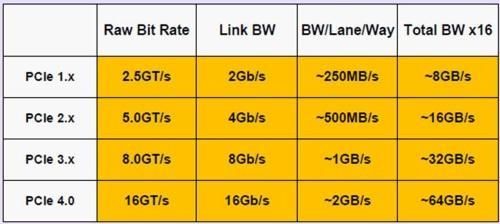AMD’s Coherent Fabric To Clock in 100 GB/s Interconnect Speeds – Open Nature Design
in a perfect situation, all GPUs inside a workstation can be made to act as a single resource that aims to solve a specific set of problems. Currently, AMD only provides a software based multi-GPU framework added in their recent Boltzmann Initiative but moving forward, AMD knows that an update to their multi-GPU solution, also known as CrossFire, is needed to provide a hardware based multi-GPU solution that aims to deliver a robust scaling across AMD’s GPUs. For this matter, they are developing their own open Interconnect fabric that will not only allow AMD GPUs to run in tandem with one another but also allow third-party solutions (GPUs, FPGAs).
PCI-Express is already seen as a bottleneck when connecting several nodes in high-performance sectors. AMD sees their current PCI-e and CrossFire solutions not working with next generation machines hence they have to design a new coherent fabric. The interconnect will offer speeds of 100 GB/s across multiple GPUs and APUs that are featured inside AMD powered compute machines and will deploy some open standards. Asking if the interconnect will also maintain memory coherency and sharing between the GPUs and CPUs, Raja stated that he can’t reveal that right now but will definitely have a detailed showcase of their coherent fabric later on as coherency between their several chip designs is being kept in mind.
you can find the full Article Here
in a perfect situation, all GPUs inside a workstation can be made to act as a single resource that aims to solve a specific set of problems. Currently, AMD only provides a software based multi-GPU framework added in their recent Boltzmann Initiative but moving forward, AMD knows that an update to their multi-GPU solution, also known as CrossFire, is needed to provide a hardware based multi-GPU solution that aims to deliver a robust scaling across AMD’s GPUs. For this matter, they are developing their own open Interconnect fabric that will not only allow AMD GPUs to run in tandem with one another but also allow third-party solutions (GPUs, FPGAs).
PCI-Express is already seen as a bottleneck when connecting several nodes in high-performance sectors. AMD sees their current PCI-e and CrossFire solutions not working with next generation machines hence they have to design a new coherent fabric. The interconnect will offer speeds of 100 GB/s across multiple GPUs and APUs that are featured inside AMD powered compute machines and will deploy some open standards. Asking if the interconnect will also maintain memory coherency and sharing between the GPUs and CPUs, Raja stated that he can’t reveal that right now but will definitely have a detailed showcase of their coherent fabric later on as coherency between their several chip designs is being kept in mind.
you can find the full Article Here



